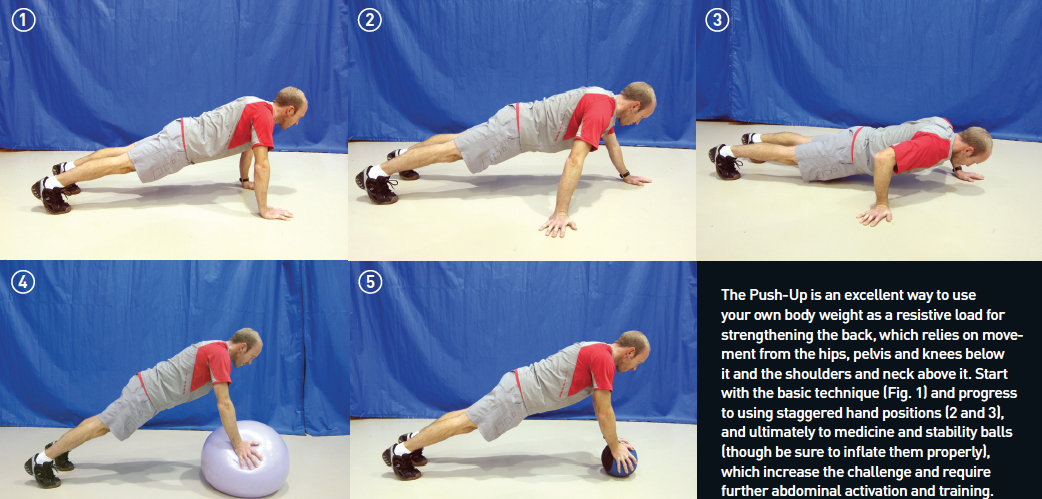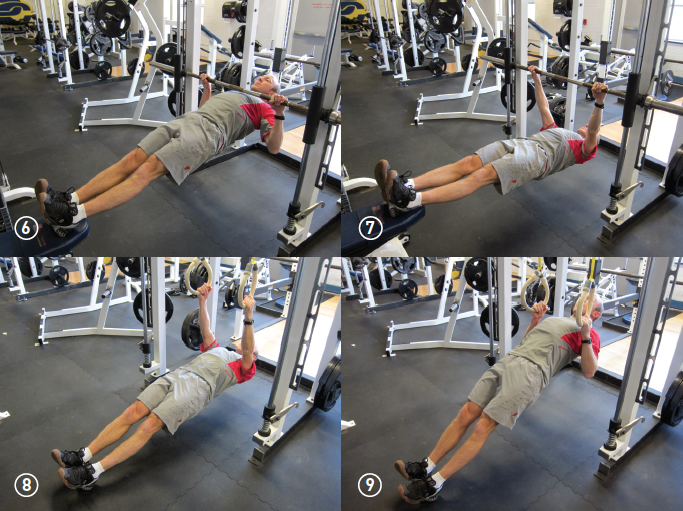By Damon Leedale-Brown, Sports Scientist & Conditioning Specialist
In the last article we discussed Level 2 of our Core Training progression and looked at a series of three basic exercises—the Big 3—which are considered effective at developing stability for the spine.
Having established excellent technique and patterns of movement (Level 1) and then improved your ability to stabilize the lower back (Level 2), you can now begin to introduce exercises designed to develop strength and stiffness through the torso.
Level 3—Developing Lower Back and Torso Strength
A healthy, strong back relies to a large extent on excellent movement and control from the hips, pelvis and knees below it and also the shoulders and neck above it. It is hard for any athlete to exert strength if their joints or body position are unstable and external forces are being misdirected through the body.
Your own body weight can provide an excellent resistive load, and in many cases can be used effectively to challenge the torso without the need for any fancy gym machines! Let’s consider two very simple exercises—the push-up and the pull-up.
1. The Push-Up
The push-up is a great exercise for integrating the torso, and variations in hand position can enhance the level of challenge this exercise provides. For many aspiring athletes the push-up is by no means an easy exercise and initially you should develop competence in the basic push-up focusing on maintaining a good body position by bracing through the torso and controlling the lumbar spine position (see figure 1). Once you are able to maintain excellent form for a minimum of 10 repetitions of the basic push-up you can then consider the following progressions:
Staggered Hand Placement
Position one hand forward of the shoulder and one behind (figures 2 & 3). Again focus on control through the mid-section by bracing the abdominals, and aim for 3-4 sets of 5-10 reps. Alternate hand position between each set.
Medicine Ball/Stability Ball Push-Ups
Providing a less stable surface for the hands is another excellent way of increasing the challenge of this exercise and providing a higher level of abdominal activation and training stimulus (see figures 4 & 5). Again, start with sets of 5 reps and build towards 3-4 sets of 10 reps.

2. Pull-Ups
Given that most individuals will really struggle with traditional pull-ups initially, a great way to begin developing pulling strength while at the same time providing a great challenge for the torso would be an inverted row or pull-up. This can be done by using a bar in a squat rack positioned at waist height, and a bench about ¾’s of a body length away from the bar. The feet are placed on the bench and the hands on the bar in an overhand grip just slightly wider than shoulder width. Your aim is then to hold the torso perfectly straight while pulling the chest to the bar (see figures 6 & 7). This exercise is great at not only stressing the upper back muscles but also the entire torso area. For beginners to this exercise you may have to start with as few as 2-3 reps and then gradually build up in blocks. Better initially to do 5-6 sets of 2-3 reps rather than doing one set to complete fatigue and never being able to progress further from there. A variation to this exercise would be to perform it using straps or cables which are commonly found now in most fitness centers. In this situation the feet can be placed on the floor and the torso held rigid as the body is lifted up from the floor so the cable/strap handles come close to the chest (see figures 8 & 9). Again, start initially with a higher number of sets and smaller number of reps as you build your proficiency on this exercise (i.e., 5-6 sets of 2-4 reps).
These variations on the push-up and pull-up should provide you with a great training stimulus for developing core and lower back strength while having the added benefit of developing excellent balance in upper body strength and stability.
In our next article we will continue to look at other exercises that are effective in developing a strong core and healthy back focusing primarily on exercises using cables.
Have fun pushing and pulling!



